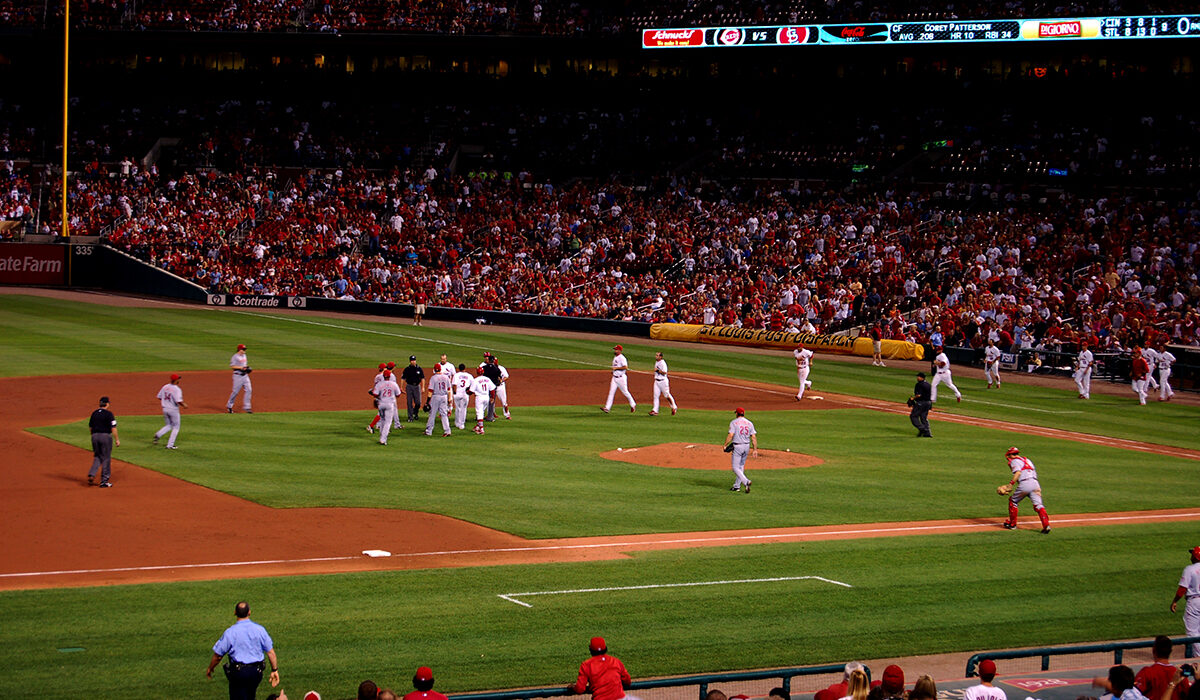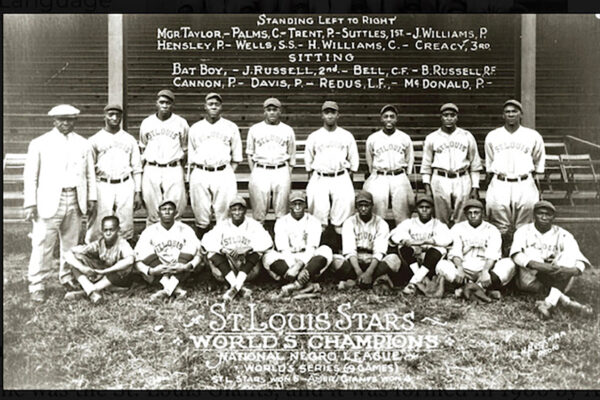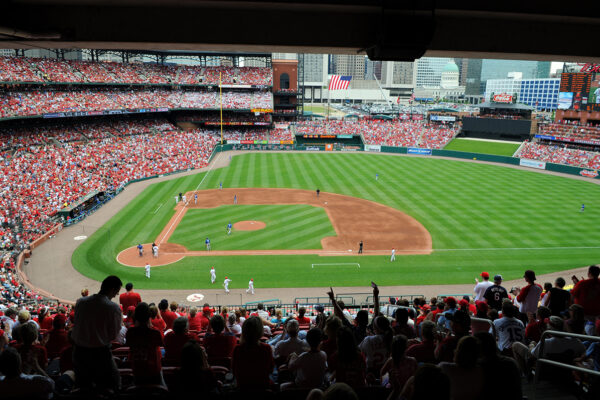Here’s one way to look at how and when baseball pitchers throw at opposing batters after one of their own gets plunked: corporate conflict resolution.
That’s part of the research findings by three business scientists — two at Washington University in St. Louis and one at China’s Fudan University — who, true to the 21st-century fabric of Major League Baseball, pored over 20 seasons of statistics to reach some intriguing data and conclusions with implications off the field and in the office.
For one thing, these baseball retaliations mostly arise in the fifth and sixth innings. But let’s not get ahead of the game within the game.
At the heart of their study is how “negative reciprocity” leads to “destructive sequences of reprisal.” It translates into organizational behavior and, more pointedly, to workplace environment under the categories of conflict, cohesion and relationships — healthy or not.
As the co-authors write in the study, “Our findings yield insights about the origin and evolution of intergroup conflicts with implications for theories of conflict and for organizational practice.” The study, titled “Relational Aspects of Vicarious Retribution: Evidence from Professional Baseball,” is forthcoming in the Journal of Applied Psychology.
“Ethnography and experiments have given us a lot of insight about the biology and psychology of reciprocity, including how it often generates profitable trusting partnerships but can sometimes degenerate into prolonged, highly destructive conflicts,” said Bill Bottom, the Joyce and Howard Wood Distinguished Professor of Organizational Behavior at the Olin Business School.
Bottom, who is also Olin’s associate dean for undergraduate programs, was joined in the study by Tat Chan, professor of marketing at Olin, and Xing Zhang of Fudan University.
“Major League Baseball provided us with a unique opportunity to study conflict escalation among highly paid professionals where the record-keeping is detailed and highly reliable,” Bottom added. “Because the game is now a global one, we could also examine the effects of diversity.”
“Major League Baseball provided us with a unique opportunity to study conflict escalation among highly paid professionals where the record-keeping is detailed and highly reliable.”
Bill Bottom
Certainly, businesses make punitive decisions within the workplace, via intergroup conflict, or they take malicious actions against other firms — sometimes at their own peril. The co-authors also make an allusion to similar acts of aggression in everyday life, such as the hate-mongering and name-calling that precipitated anti-Asian verbal and physical attacks on American soil in 2021. That’s an embodiment of the vicarious retribution seen on a baseball field when a teammate feels his side has been wronged and the pitcher throws at an opposing batter.
The co-authors sought a simple, old-fashioned American backdrop: what they labeled the “empirical setting” of regular-season baseball. In fact, their paper cites and quotes Hall of Fame pitchers Pedro Martinez and the late St. Louis Cardinals great Bob Gibson, against whom opposing batters stood at the plate bearing consistent respect and, when tensions or situations came up, occasional fear.
“Vicarious retribution where third parties start getting involved is especially prone to destructive escalation, so this was a setting where we could study it over time under controlled settings where the rules are firmly established and enforced,” Bottom said. “Because the profession is now truly global, we can also examine the effects of culture and diversity on aggression, reciprocity and escalation.”
They thought by examining these occurrences and interrelationships, they could predict when a conflict might likely begin, which individuals are prime suspects for acts of retribution and then identify likely targets.
True, accidents happen in a modern baseball world of staffs of 12-plus pitchers and minor leaguers constantly called up to pitch in the majors. A younger pitcher misfires once amid the nearly 300 pitches per game and the ball glances off or strikes a batter inadvertently. In statistics-mad baseball, however, it’s possible to find clean data about intentionally struck batters. And they aren’t the first scientists to probe baseball thusly; they cited studies going back 30 years or more involving the social strata and bellicosity in baseball.
Whether it’s by accident or on purpose, it’s recorded in the scorebook the same: hit by pitch (HBP). Bottom, Chan and Zhang studied two decades of “punitive aggression” in the majors, from 1991 to 2010. They broke down the pitcher and batter relationship: each to their own team, prior teammates or rivals, etc. Then they input the data into their computational model for retribution dynamics. For statistic-mad baseball types, that worked out to be 42,241 games, 2.5 million at-bats and 20,000 HBPs. Moreover, to test their hypotheses, they identified “113,461 unique pairs of a particular pitcher and a teammate who had previously been hit during a game as well as 479,955 unique pairs of a pitcher with an opposing batter.”
What they found will surprise nary an avid baseball fanatic. Once a second pitcher retaliates by plunking a batter from the team that first hit their teammate with a pitch, the incident is perceived as “legitimate justification” and the conflict subsides. Game-within-a-game over. Nobody else gets plunked.
Some other findings:
- The initial HBP occurs most commonly in the fifth inning, around the game’s 42nd at-bat.
- The retaliatory HBP comes in the sixth inning, around the 54th at-bat.
- A pitcher is more likely to retaliate on behalf of a teammate if both he and his plunked teammate come from a country other than the U.S. (However, foreign-born pitchers — probably due to empathy for each other’s “outsider” status — are less likely to plunk a fellow foreign-born player.)
- A pitcher is more likely to target a fellow former collegian for reprisal. (Rivals from competing schools, the co-authors wondered? That would underscore the behavioral perception of “out-group” vs. “in-group.”)
- Winning teams and home teams are more likely to plunk in retaliation. Better paid pitchers are, too.
- Former teammates are less likely to be involved in a plunking.
That last finding is where a true everyday benefit scratches its place in the batter’s box of the business realm. Businesses often promote or cycle employees through their departments and organizations, building camaraderie and shared experiences. In other words, such moves are team-building and conflict-sturdy.
“Industries characterized by greater professional mobility may prove less susceptible to escalation; the broader scope of personal relationships may dampen motives for vicarious retribution,” the co-authors write.
Bottom concluded: “We found that the more diverse teams performed better and pitchers on those teams were more likely to engage in vicarious retribution on behalf of a teammate. Given prior work on cohesiveness of teams in industry, we expected that greater diversity might limit this kind of retribution but found that wasn’t true. The best teams appear to be adept at managing diversity and the willingness of veteran pitchers to take this kind of action on behalf of a teammate may be one aspect of that.”
So … play business.
Zhang’s work is supported in part by the National Natural Science Foundation of China [Grants Nos. 72072035 and 71832002].



